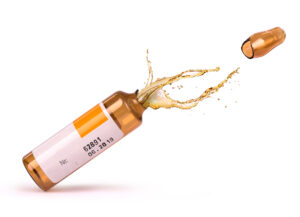
Establishing a culture of quality in pharmaceutical manufacturing
With drug product development and patient needs evolving faster than ever, maintaining quality and regulatory compliance while meeting supply demand in clinical and commercial manufacturing can be challenging.
In this industry, quality isn’t just a goal – it’s a mandate. Aligning teams across global sites and departments can be a complex process, but building a culture of quality is more than just meeting compliance standards; it’s a commitment to excellence that improves interdepartmental communication, innovation, and overall efficiency.
This is why establishing an ever improving, robust culture of quality in the workplace that is understood and accepted by all is essential.
Despite the challenges of quantitatively assessing quality culture within organizations, the impacts have been studied through a survey conducted by the PDA. There was a positive correlation found between the quality culture of an organization’s employees and its quality system maturity. Consequently, establishing a robust quality management system is understood as an all encompassing process that involves cooperation from the whole team.
Building a quality culture can be summarized by:
- Creating a culture of trust between companies and consumers
- Establishing clear structures of communication across the team and sharing information in a timely manner
- Ensuring quality goals are supported by employee participation and that every employee.

liquid medicine dripping from broken ampule
The Fear of Deviations
Commonly, the underlying causes of audit failures can be pinpointed to the organization’s culture and practices. When deviations are observed, there may be hesitation in reporting it due to the fear of:
- Audits that result in facility fines and shutdowns
- Its impact on product quality and safety
- Reduced credibility and tarnished reputations
It is therefore necessary to implement stringent team training that focuses on early identification and correction of potential deviations; the importance of adhering to protocols; and reporting as well as comprehensive documentation and communication across teams.
By providing the right training to the workforce, as well as fostering a culture of teamwork, transparency and accountability, the fear of deviations can be mitigated and a successful quality management system can function.
The Role of a Quality Culture Leader
As mentioned before, the importance of quality must be highlighted across all levels of the organizational structure. However, the quality leader carries the responsibility of ensuring that a culture of quality is maintained, is continuously evolving,and that the team understands their own contributions but can also rely on the leader for guidance in this process.
At the PDA/FDA Joint Regulatory conference in Washington, September 2024 Cormac Dalton, VP of Manufacturing Europe in AbbVie, and Melissa S Seymour, EV and Chief Quality Officer at Eli Lilly and Company, presented on “Engaging the Whole Organization in Quality.” Dalton discussed the importance of having patient centric conversations and consistently redirecting the focus to patient safety with the mindset that “The Patient is the Customer” and therefore any deficiencies in quality directly impacts them.
Dalton also touches on the importance of building quality culture by rotational training through which individuals gain knowledge and experience in multiple areas of the organization. This strengthens their understanding of team culture and challenges at an interdepartmental level, enhancing their ability to engage and support team members.
Similarly, Seymour emphasized the importance of quality teams having in-depth product knowledge of costs, pipeline and company goals in addition to processes. Being part of these early discussions allows them to shift their focus from only compliance to a mindset of continuous improvement. By leveraging new technologies, especially with the advancement of AI and IIoT tools to aid, this helps ensure that established processes are being systematically updated and standardized. Which in turn, as stated by Seymour, “keeps procedures simple and bolsters efficiency and productivity.”
With these in place, an organization can overcome the fear of deviations and rely on well established and understood QMS and compliance processes.

Conclusion
In the pharmaceutical manufacturing industry, quality is non-negotiable. Strict regulations and high product standards that are constantly under scrutiny will always be essential for ensuring product integrity, and meeting ever-changing market demands. A strong culture of quality that is built into the foundation of organizational processes at every level, not only improves interdepartmental communication and manufacturing efficiency, but most importantly ensures that patients get the treatment they need, when they need it most.

